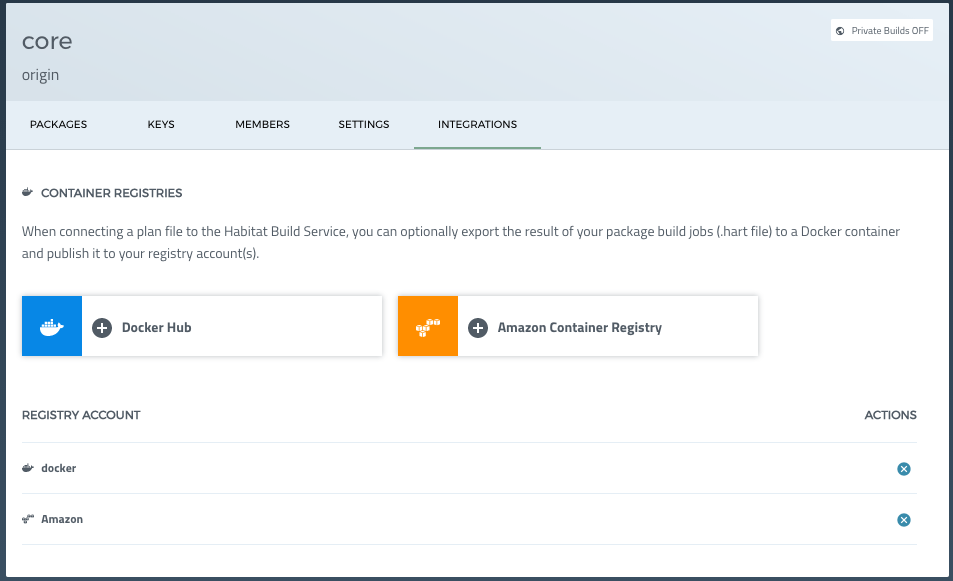Habitat Builder now supports publishing containers to Amazon Elastic Container Registry (ECR)! Habitat Builder enables users to programmatically build, export, and publish their applications and services to container registries.
Users of Habitat Builder can deliver both legacy and greenfield applications in an atomic, immutable, isolated artifact that is automatically rebuilt as upstream dependencies, libraries, and application code are updated. This Habitat artifact (*.hart) can then be automatically exported to a variety of formats, depending on the environment and job you are trying to do, including a Docker container.
Once you’ve set up your package to automatically export as a Docker container, you can integrate your Habitat Builder origin with a container registry, and automatically publish your application and services as a container to the registry or registries that best complement your workflow. Today, we are excited to announce the addition of Amazon ECR as a publishing location.
If you’re new to Habitat Builder, you can fly through a quick 10 minute demo to set up a sample Node.js application, auto-building upon updates, exporting to a Docker container, and publishing those updates to a container registry here: https://www.habitat.sh/demo/
Once you’ve done that demo, adding Amazon ECR as a publishing destination is super simple. Go to your origin, select the Integrations tab, and click on the “Amazon Container Registry” option.

You will be given a form to add your Amazon ECR information to link your accounts.

And then you’ll go through a simple setup procedure where you can select the GitHub repo where your Habitat plan.sh lives, decide if you want your Habitat packages to be listed as public or hidden as private, and choose to publish your containers to Amazon Container Registry and/or Dockerhub (let us know if there are more container registries you’d like us to add in the comments!). You can also tag your builds with specific tags if desired.

Once you’ve clicked the “Save Connection” button, your Habitat Builder-maintained application can start exporting and publishing to Amazon ECR! Click the “Build latest version” from your package’s page to kick off a build immediately, or wait for an automatic rebuild to occur via committing to your application’s Github repo’s master branch.

Learn more about Habitat
- Visit the Habitat website
- Try the Demo
- Learn how to build applications with Habitat in these hands-on modules
- Join the Habitat Community Slack

